Agile vs DevOps debate is like the genie and the lamp existed. Would you wish for an eternally fast and reliable application? DevOps methodology would be the genie, granting continuous software delivery. Agile methodology would be the lamp that makes this possible.
Agile revolutionized the release of high-quality software faster, with improved collaboration between the development and management teams. DevOps came next, with a whole cultural shift, where automation and continuous delivery are the principles, and the dev and ops gap no longer exists.
What are their differences? Can one exist without the other? Let’s dive into the Agile vs DevOps discussion, and you’ll be surprised about how these approaches can transform your organization, team, and applications.
- What is the Agile Methodology?
- What is the DevOps Methodology?
- What is the difference between Agile and DevOps?
- How are Agile vs DevOps related?
- How can Agile vs DevOps work together?
- Agile vs DevOps Use Cases
- Key Takeaways of Agile vs Devops
- Agile vs DevOps FAQs
What is the Agile Methodology?
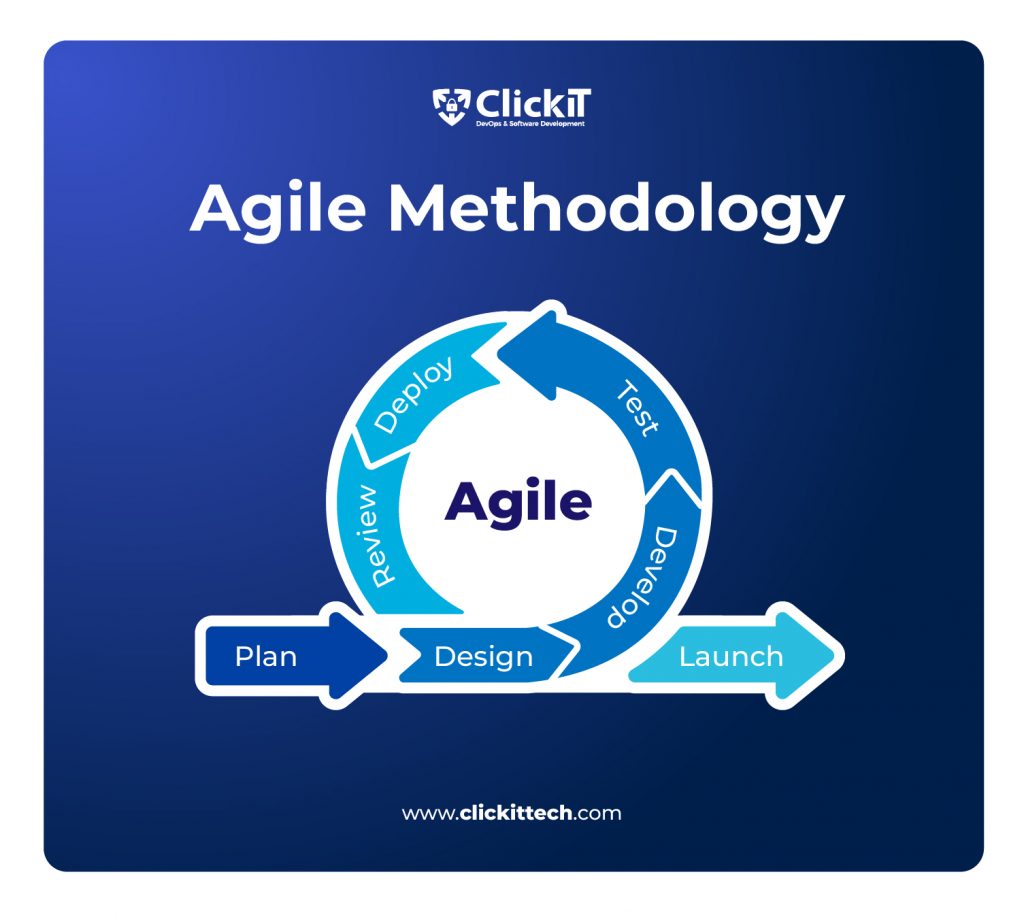
One thing is true in the Agile vs DevOps debate: adopting Agile methodologies is a huge shift for a company.
This is especially true when the organization values traditional methods. It involves a complete transition for teams and their decision-making strategies. It is a positive change, but a big one, for sure.
The agile methodology follows frameworks like Kanban or Scrum. It consists of sprints, which last about 2-4 weeks and include stages that the development team follows to deliver efficient results to the client after the sprint. Let’s review a basic Agile process, which can be extended or changed according to your business requirements.
- Discovery: The team does research to define the task, the goals it has in mind, and its specific requirements.
- Planning: In this stage, the team specifies the steps they must take to complete the task. The priorities and course of action are determined.
- Design: This is the part of the process where teams start creating a solution for the task they are working on.
- Developing: Teams start coding, and this process is more efficient thanks to how small and divided each sprint is.
- Testing: This phase is crucial during the sprint to identify and fix any potential issues before deploying.
- Deploying: Software is frequently and safely delivered to users at each sprint.
- Monitor: Clients and users provide feedback, teams monitor the software, make the appropriate changes, and collect that information to improve the next cycle.
These sprints are repeated with each required task until the final project is concluded and delivered.
What are some key factors for Agile development teams? Click here to check out a full guide by Microsoft.
A flexible software development approach, where people and collaboration matter the most. Resulting in improved products and quick deliveries.
People, businesses, and technology are dynamic and constantly changing. Processes can’t remain static and permanent. Evolution is necessary; that is why the Agile approach transformed how teams produce and deliver their products.
In software development, this iterative approach improved collaboration between development teams by prioritizing their needs over processes or tools. The agile methodology encourages developers to focus on creating small pieces of the project – called sprints – and releasing them for testing. So, clients can receive results faster, and teams can make changes promptly without compromising deadlines or extra resources.
This methodology came to life through the Agile Manifesto launched in 2001. Which stands for continuous collaboration and faster delivery and states the following values:
Individuals and interactions over processes and tools.
Working software over comprehensive documentation.
Customer collaboration over contract negotiation.
Responding to change over following a plan.
What are the benefits of Agile?
The agile methodology started as a way to innovate software development, as it was considered to be a static and not-so-flexible process. However, after testing its efficiency, more and more industries started incorporating it.
Overall, this is because it focuses on the user’s needs, generally improves collaboration, and accelerates processes that used to take more time and resources.
The main benefits of Agile include:
- Increased quality: A consistent focus on testing and delivering results means that the process is improved with every sprint, ensuring the quality of the end product.
- Improved collaboration: Agile promotes an environment where teams can communicate and work together to reach the company’s goals.
- Customer satisfaction: Problems are easily solved, results are delivered faster, the client’s vision is understood better, and communication flows constantly.
- More predictability: Product managers and owners are able to measure performance, deadlines, and resources with more precision, thanks to the effectiveness of working by sprints.
- Reduced risks: Developers have better observability of the project, reducing potential issues.
Read the blog software engineering principles to develop quality software suitable for the end user.
What is the DevOps Methodology?
You may be familiar with DevOps methodologies, but DevOps is also a set of practices and a mindset. It made its first official appearance around 2009 and continues to impact today’s software development market.
After the Agile boom in the early 2000s, organizations realized that although there was an improvement in the development team, there wasn’t enough collaboration with the operations department.
The DevOps approach combines modern practices to promote a full cultural shift in the organization, increasing collaboration between teams that are used to working separately – starting with the development and operations departments – and improving the workflow to deliver quality results to the clients continuously.
DevOps methodology has transformed the way software development teams work together traditionally. Businesses that succeed in today’s competitive environment must improve communication, incorporate automation in day-to-day tasks, prioritize security, and optimize collaboration processes. DevOps stands for that and more.
The DevOps lifecycle includes eight stages that form a continuous flow. Results are continuously being delivered, and teams work together to make it happen.
Here are the main stages that are part of the DevOps methodologies:
- Plan: In this stage, product managers and owners gather requirements from stakeholders. Along with the client, teams define the roadmap that they will follow to build the product.
- Code: All hands on deck! The team starts coding, making sure they are using the right tools to make the process more fail-proof and automated.
- Build: The finished code is committed to a shared repository, where developers will run builds and tests and get alerts if something fails.
- Test: After the pull request is accepted and the build stage is completed with no errors, it is important to run a series of tests in a staging environment to make the necessary changes before being deployed.
- Release: All set! The code has been tested and is ready to see the light, meaning it’s time to deploy it to the production environment.
- Deploy: The build is seamlessly deployed to the production environment. There are tools to automate this process without affecting availability and user experience.
- Operate: Time for the team to ensure everything runs as it should, collecting feedback and scaling automatically according to the platform’s requirements.
- Monitor: Based on analytics, the process is reviewed to avoid errors and make improvements if necessary.
Start a DevOps Strategy that fits your organization’s needs: read the full blog to learn how.
However, Agile vs DevOps have some considerable differences, which we’ll review here. Let’s get started!
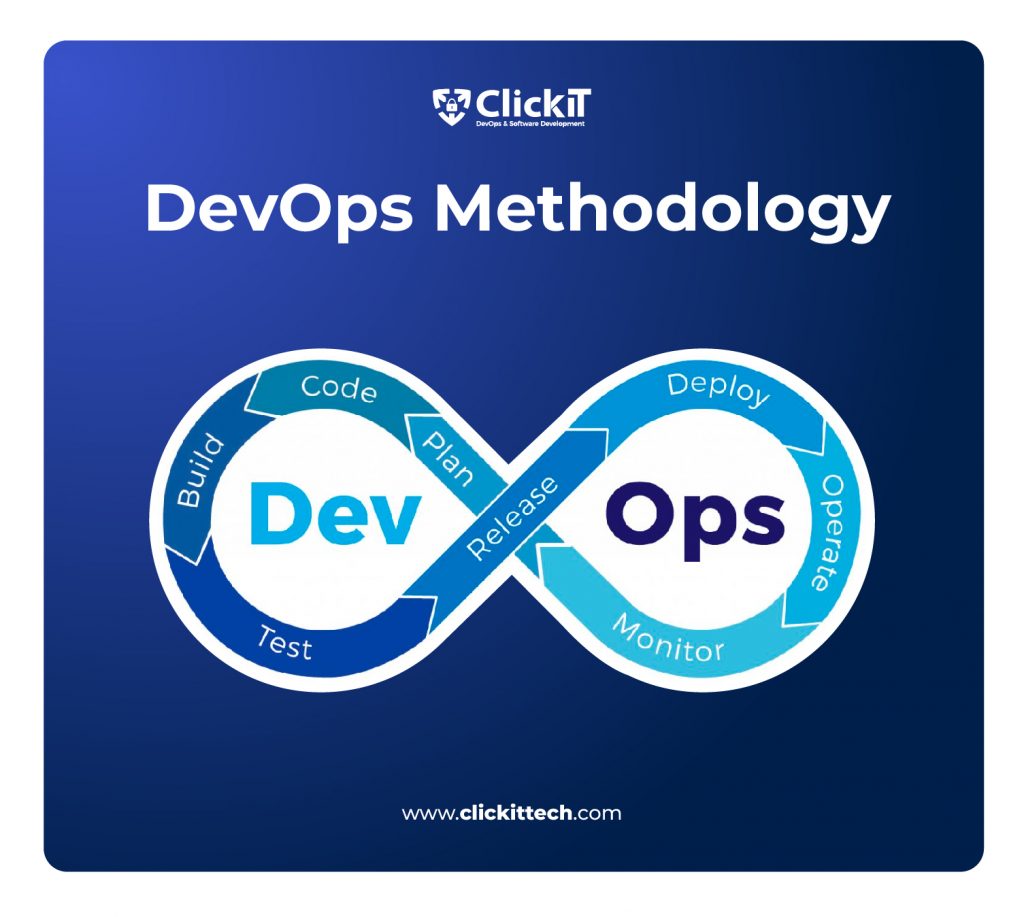
Don’t miss the full scope: Read the blog on the top DevOps Trends that are impacting industries.
What are the benefits of DevOps?
As mentioned before, DevOps methodologies started with the main goal of unifying the Development and Operations departments, as you can figure from its name. However, its power and impact as a mindset are now being incorporated at an organizational level, creating a new comprehensive transformation. Some of their top benefits are:
- DevOps prioritizes faster and constant delivery without sacrificing quality and safety.
- DevOps methodology promotes collaboration, transparency, clear feedback, continuous monitoring, and easy communication.
- This mindset offers tools to increase productivity and develop high-quality products while reducing costs.
- Security is a priority in DevOps, and process automation makes software development more practical, cost-effective, and successful.
- DevOps is an innovative approach that improves customer satisfaction and keeps the company competitive.
You might also enjoy reading DevOps Engineer vs Software Engineer.
What is the difference between Agile and DevOps?
First, Agile methodologies were created as a response to traditional ways of developing software; those processes weren’t prepared to handle change and client feedback as efficiently as teams wanted. So, this approach accelerated those cycles by dissecting them into what we mentioned before: sprints.
Agile increased collaboration between teams, especially the development and management departments. This means that developers now have a better communication flow to gather customer and user insights to improve their work.
A few years later, DevOps methodologies were inspired by Agile and its principle of prioritizing people over processes, but with a more extended approach, as it included the operations team. This was a huge transformation, as development and operations had always worked separately.
So we can identify that as the first big difference between Agile vs DevOps: Agile focuses on the gap between tech and management teams, and DevOps eliminates the silos between the development and operations departments.
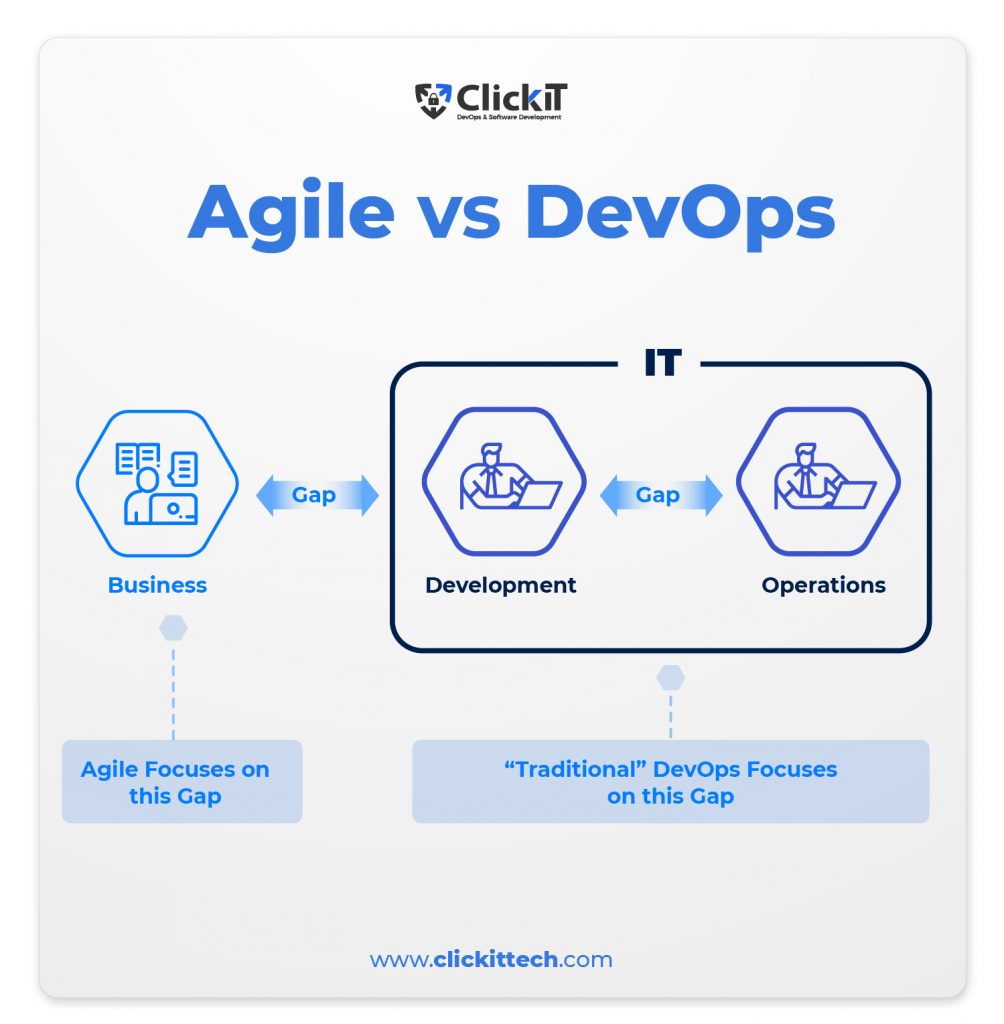
Another significant difference between DevOps vs Agile is the tools they rely on. Agile follows values and project management tools like Scrum and Kanban. DevOps uses a long list of processes and tools for automation and security, like Kubernetes, Docker, CI/CD tools, and AWS Services.
What are the best DevOps Tools for Automation? Check out the full blog.
During the software development process, Agile focuses on releasing small parts of the project every 2-4 weeks, getting feedback, and improving them on the next sprint. DevOps focuses on increasing automation, testing, and security since the early stages of the cycle, and the releases can even be daily.
Agile vs DevOps are measured differently, too. Each methodology has its own metrics to assess the team’s success. Agile measures progress with metrics like Sprint Burndown, Velocity, Cycle Time, Net Promoter Score, and Customer Satisfaction.
On the other hand, the DevOps Research and Assessment team has defined the DORA metrics as the essential aspects that measure DevOps performance and efficiency in organizations. They include four parameters: Mean Lead Time to Change, Change Failure Rate, Deployment Frequency, and Mean Time to Recover. These definitely lead the DevOps metrics list.
As you can see, DevOps vs Agile differ mainly in their priorities, the tools each approach uses, and how they measure their results.
Agile vs DevOps Comparison Table
| Agile | DevOps | |
| Focus | Individuals and collaboration between cross-functional teams | Automation and Continuous Delivery, and collaboration between development and operations |
| Tools | Scrum, Kanban | Kubernetes, Docker, CI/CD Tools, AWS Services, IaC tools, security, and testing tools. |
| Release Time | Can be 2-4 weeks | Can be daily |
| Values | Collaboration, adaptability, efficiency | Automation, innovation, collaboration |
| Metrics | Measure progress: Sprint Burndown, Velocity, Cycle Time, Net Promoter Score, Customer Satisfaction | Measure efficiency and reliability: Mean Time To Recover (MTTR), Lead Time To Change, Change Failure Rate, Deployment Frequency |
How are Agile vs DevOps related?
We’ve seen the differences in the Agile vs DevOps debate. As well as the characteristics of the Agile Methodology and the DevOps Methodology. But let’s get the full view of comparing these two approaches.
These are the aspects where Agile vs DevOps relate:
- They both require a cultural shift in the organization; it’s not just about implementing a few practices or copying a couple of their principles.
- Agile and Devops prioritize individuals and teams over traditional workflows.
- Results are user-oriented; their feedback and journey are crucial for the software development process.
- Both promote values like collaboration, seamless communication, innovation, and automation (although automation is a principle you’ll find more in DevOps).
- Fast and continuous release of high-quality results is a top priority in Agile and DevOps.
How can Agile and DevOps work together?
Agile and DevOps are that pair of friends who always lead the team to get the job done in the best way possible. Inviting their peers to collaborate, speak their minds, and create new ways to optimize their tasks. And together, they are unstoppable.
Despite the differences between DevOps vs Agile, we can now agree they share principles and values that are essential for today’s tech market demands. Nowadays, software development must be efficient and fast without compromising quality and the team’s wellness.
Organizations can accelerate software delivery, improve collaboration, and create a strategy to reach management and revenue goals by creating synergy between Agile and DevOps.
This is how incorporating DevOps and Agile methodologies can improve your business:
- Promote collaboration between departments: Better communication, more accountability, and ownership of tasks. People in your organization are happier and have space for personal and professional growth.
- Increase compliance and satisfaction: With Agile’s adaptability and DevOps automation, teams can accelerate time-to-market and reduce failure to comply with customer demands quickly.
- Overcome changing trends: Agile and DevOps working together help businesses adapt to IT trends to deliver high-quality products on time.
- Achieve business goals: By delivering software more efficiently, goals can be reached faster, increasing the organization’s competitive edge.
- Prepare your business for the future: DevOps and Agile make a comprehensive shift that strengthens your company and helps it evolve with time.
- Deliver more value: Not only is software delivered faster, but it is also better. Agile and DevOps methodologies require constant evaluation, testing, and observability throughout the complete process. To get useful insights and then improve the code accordingly.
Agile and DevOps Use Cases
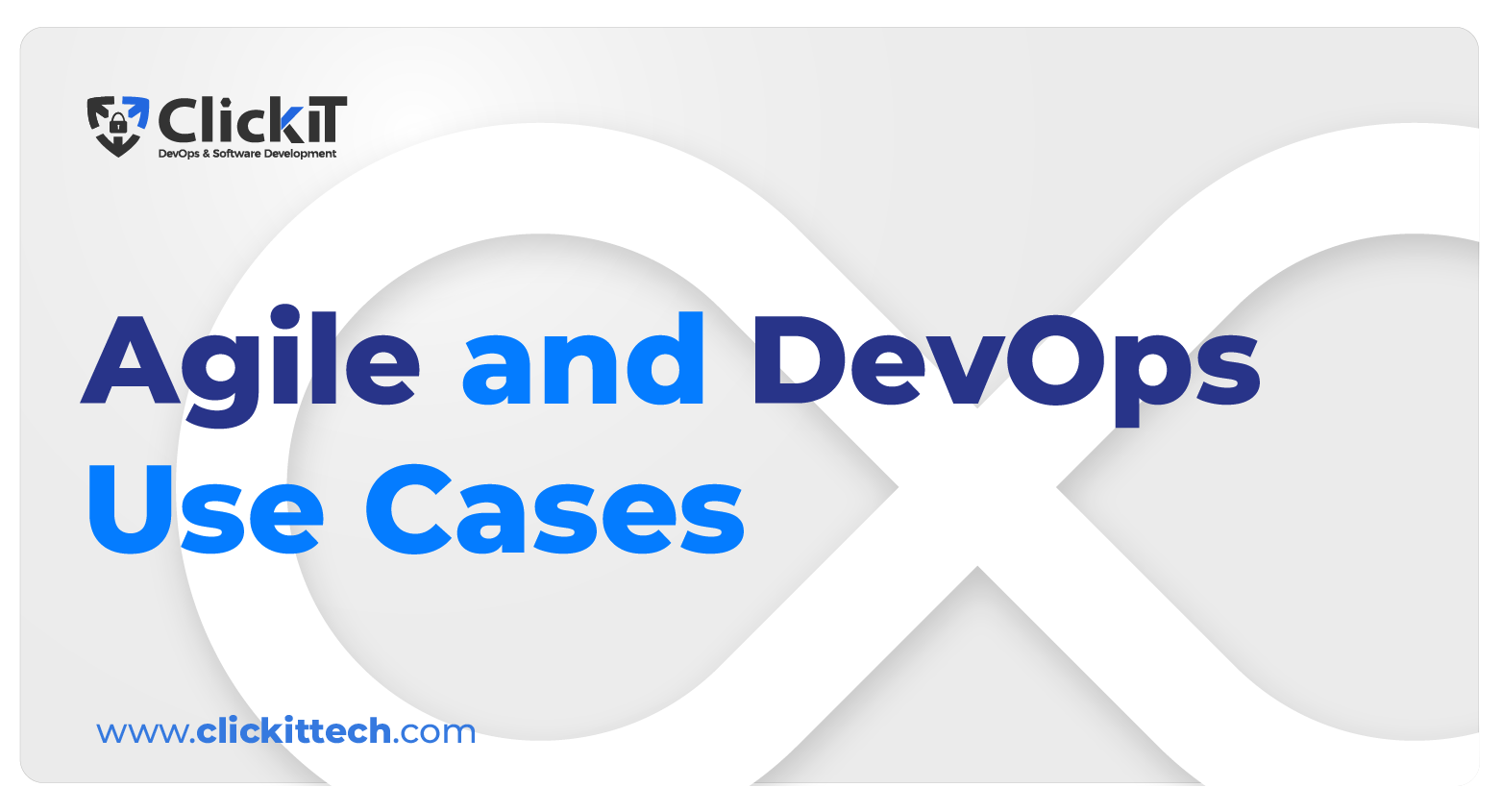
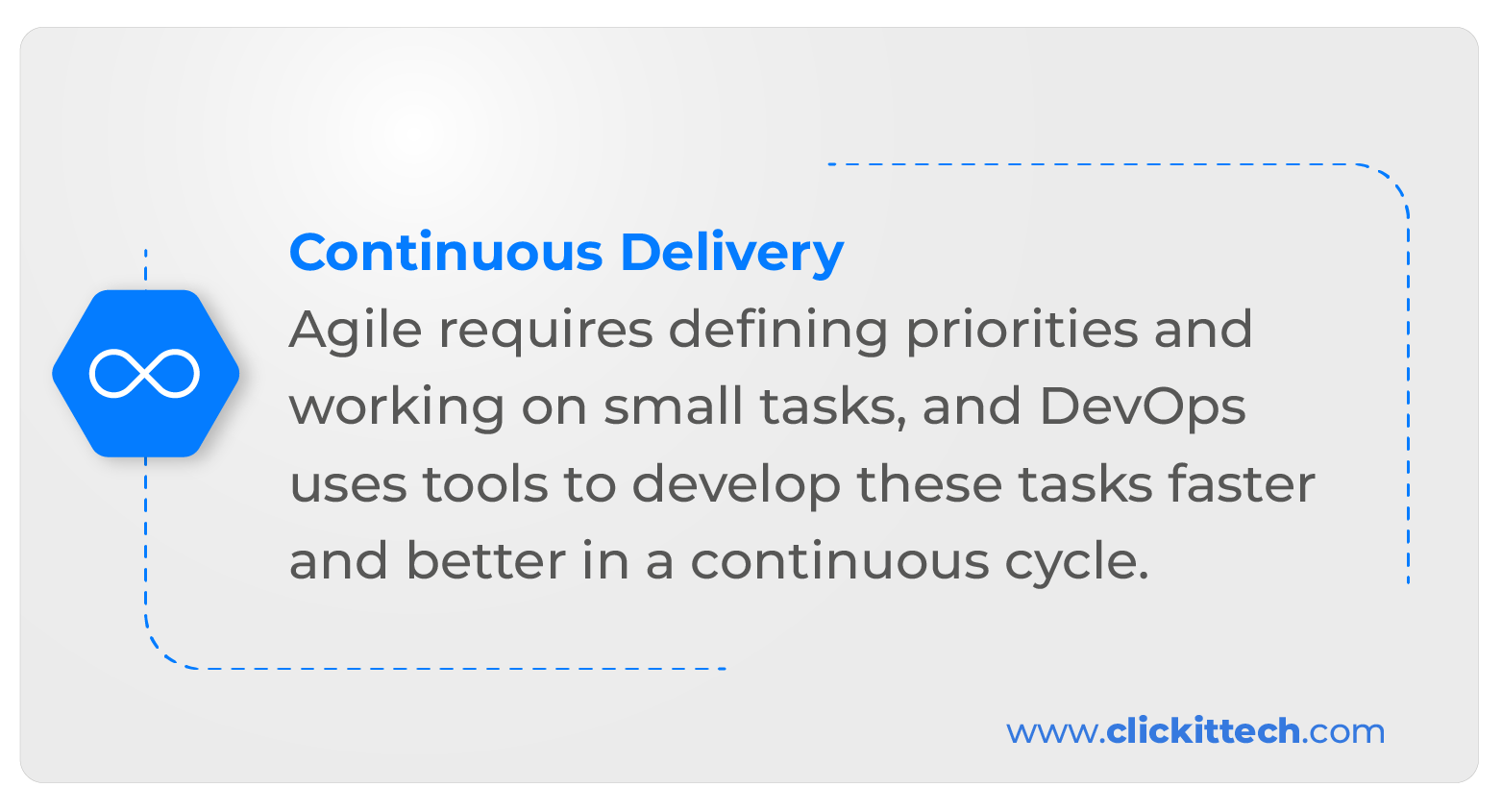
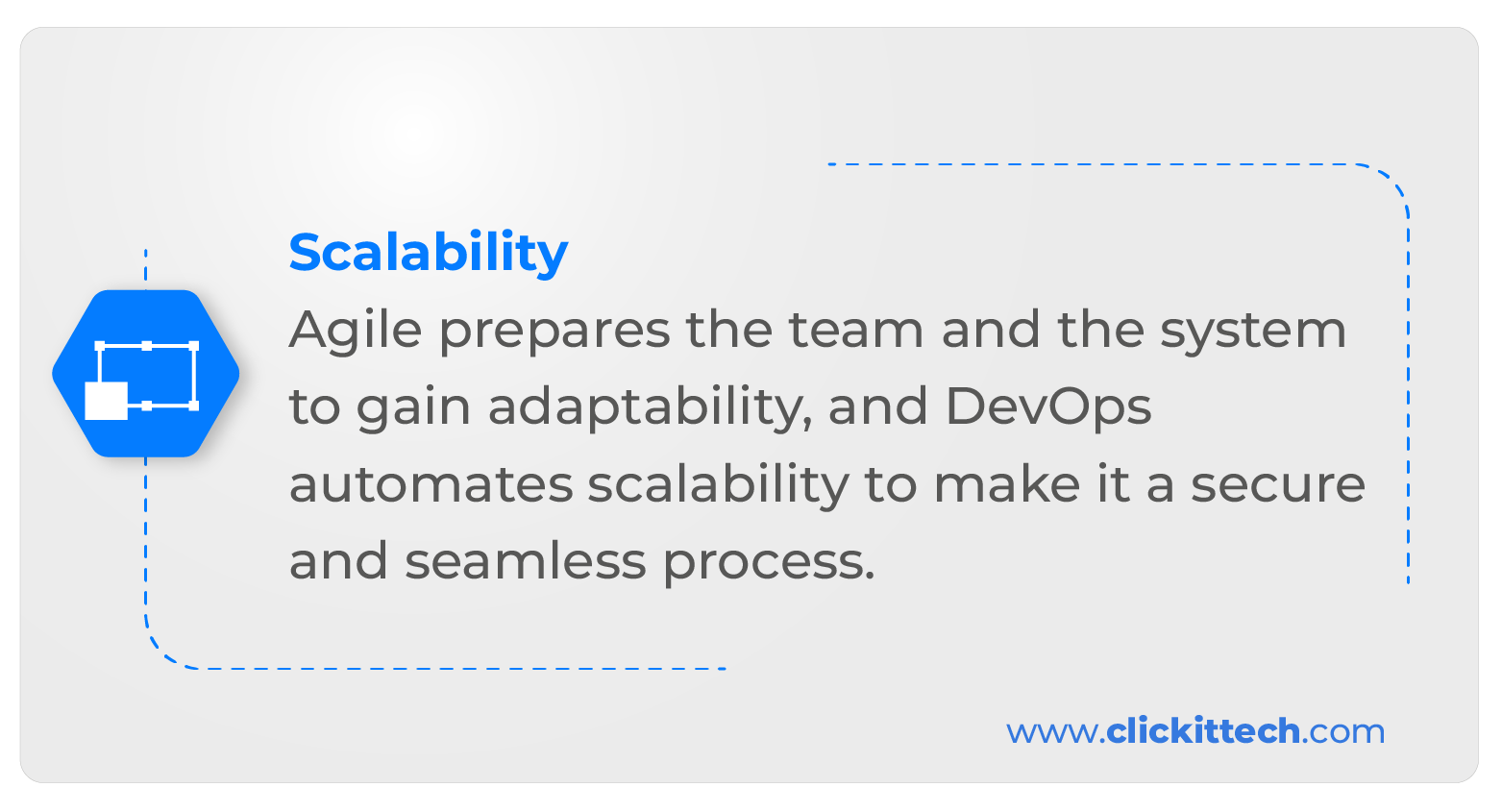
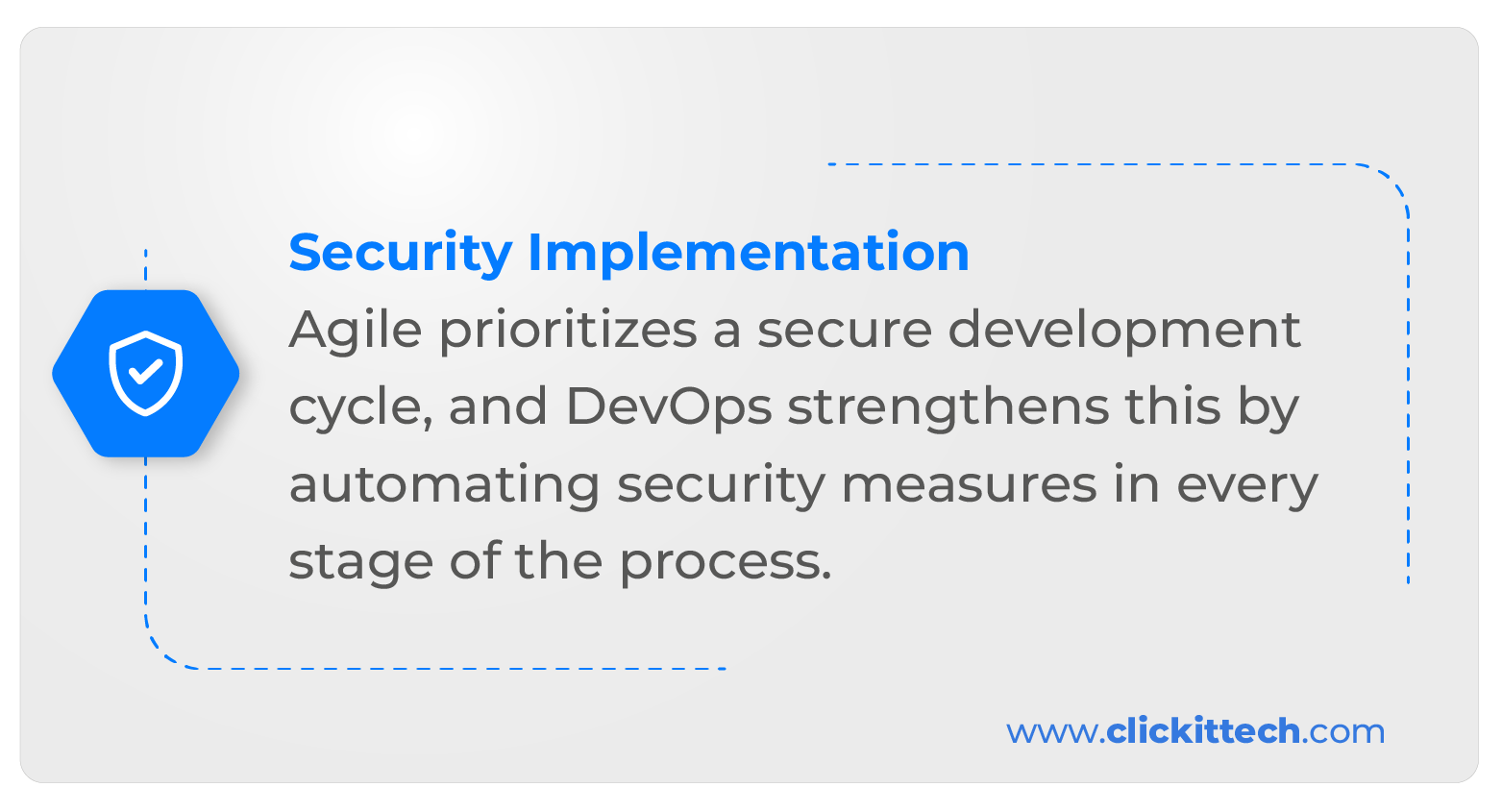
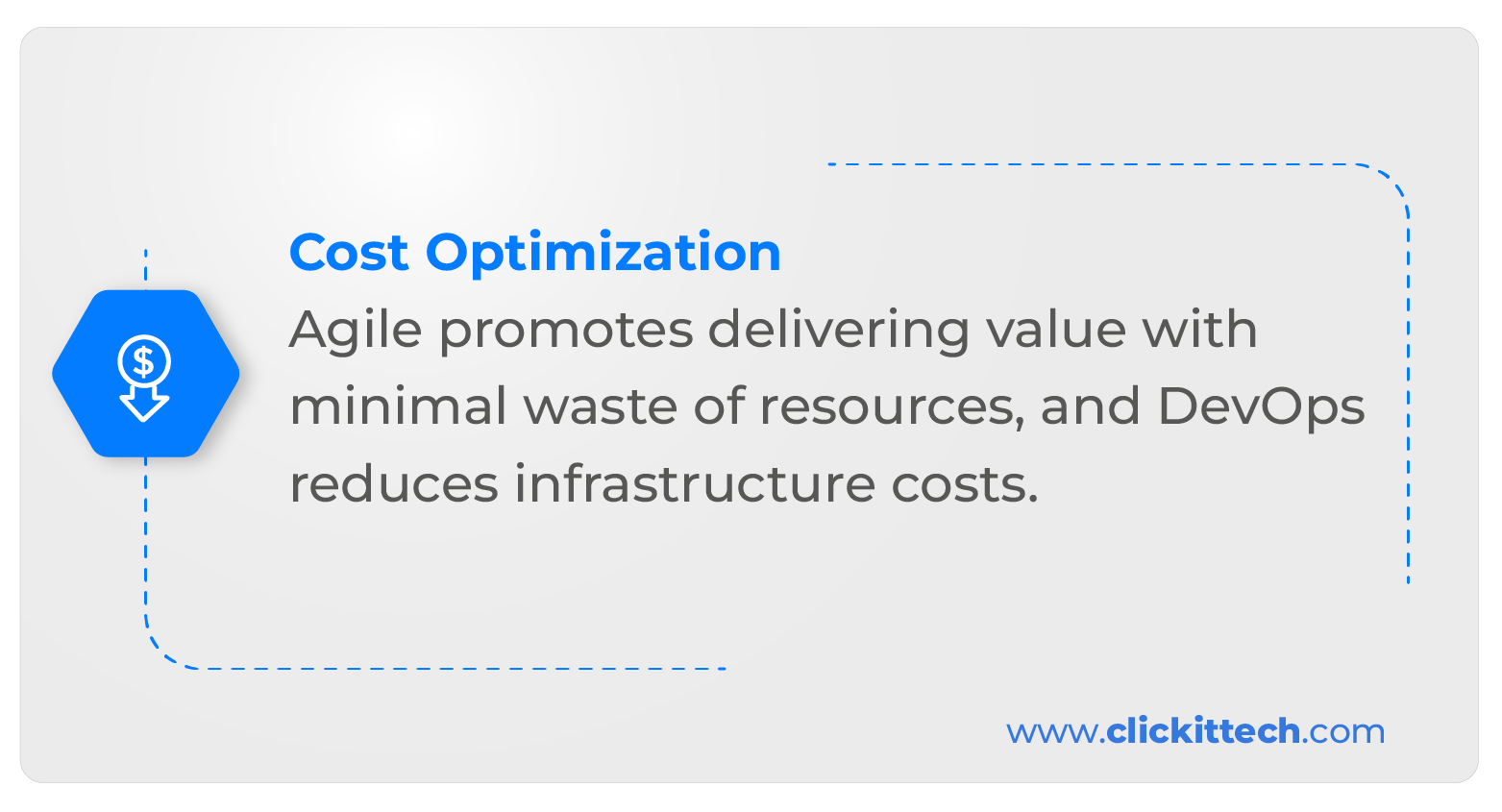
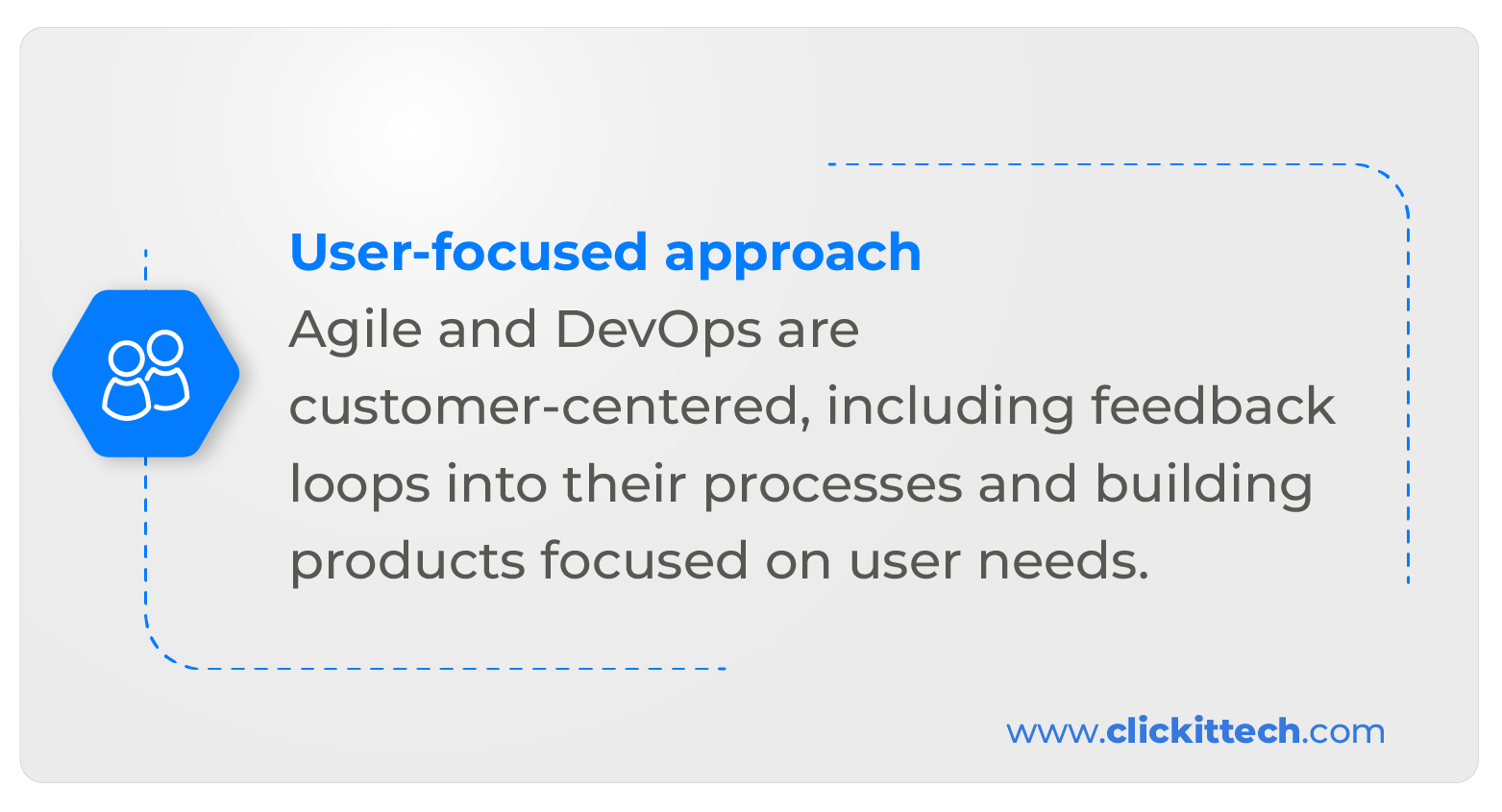
Key Takeaways of Agile vs Devops
The Agile Methodology is a software development approach designed to work by sprints, making delivery faster, easier, and more manageable. Agile prioritizes teams, their potential, and their ability to collaborate.
On the other hand, DevOps Methodology is also a mindset and a set of practices. It breaks the silos between the development and operations teams. And it is based on principles like automation, innovation, and continuous delivery.
As we reviewed in this blog, they share great similarities. The end goal of both is to accelerate software delivery while improving its quality and their team’s work. Agile and DevOps methodologies invite organizations to shift their philosophies to an innovative approach where software and collaboration are continuously flowing.
But it is worth having the Agile vs DevOps conversation because they also emphasize different aspects of software development and their collaborators.
In the end, the Agile vs DevOps debate can be understood better as two revolutionary methodologies. When implemented correctly, they can transform your business to make it faster, more collaborative, reliable, and profitable.
Up for another fun debate? Read the blog: DevOps Engineer vs Software Engineer

Agile vs DevOps FAQs
Agile methodologies are an iterative software development approach where the process is divided into small tasks that are completed by sprints. Agile ensures software is delivered faster and with higher quality thanks to the testing, feedback, and improvements that are made with each sprint.
DevOps methodologies are a set of practices that promote collaboration between the development and operations departments. DevOps creates a transformation where software development is delivered in a continuous cycle that is automated and secure.
While Agile methodologies and DevOps methodologies are better implemented together, thanks to how related they are, they do have some differences. For example, DevOps doesn’t exist without automation, but it is not the main priority of Agile. DevOps also promotes collaboration between devs and ops, while Agile focuses more on development and management relations.
It is possible to adopt Agile and DevOps methodologies into an organization fully. With the assessment of an experienced DevOps company like ClickIT, your team can make the complete shift to make your processes more efficient, reliable, secure, and faster.









